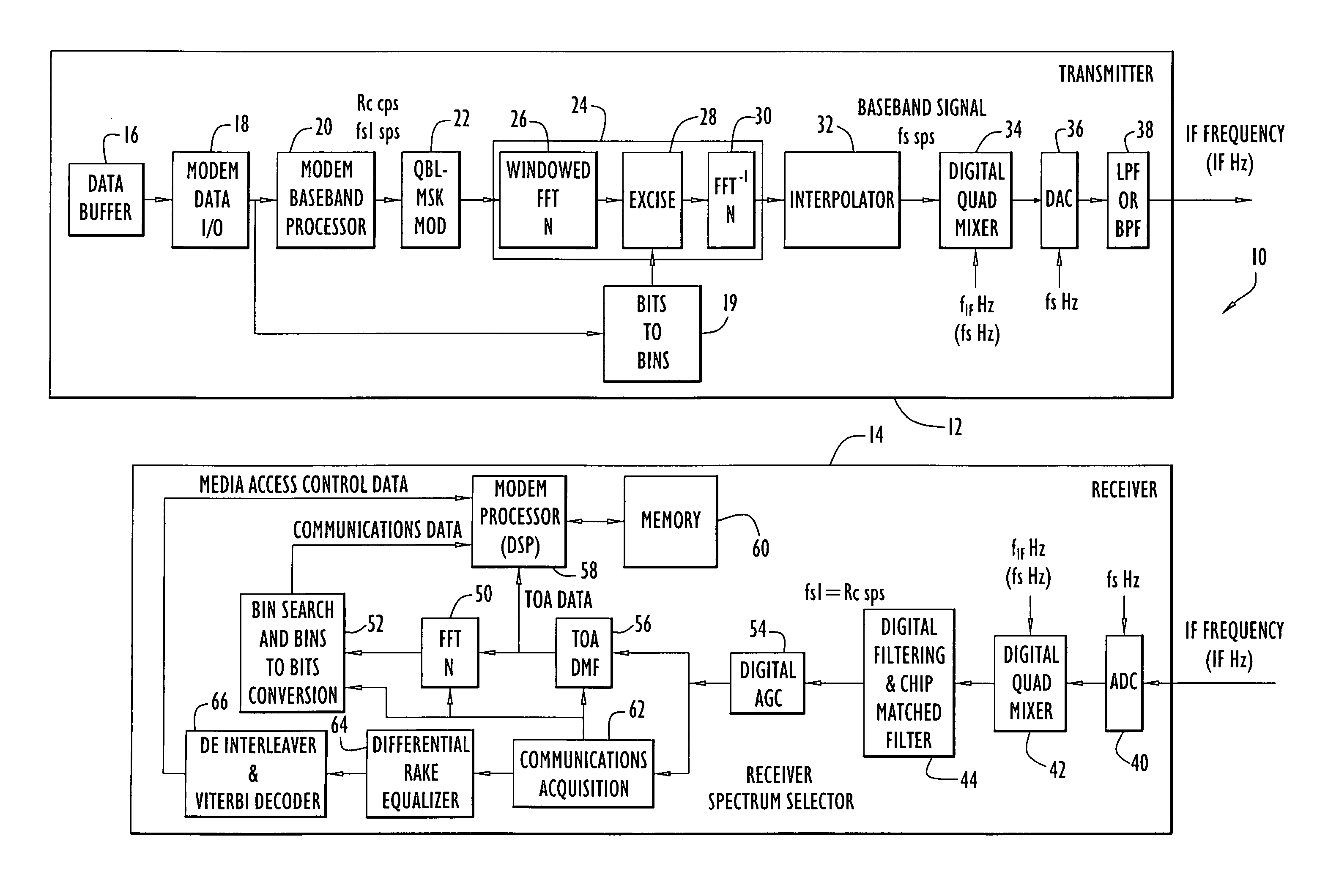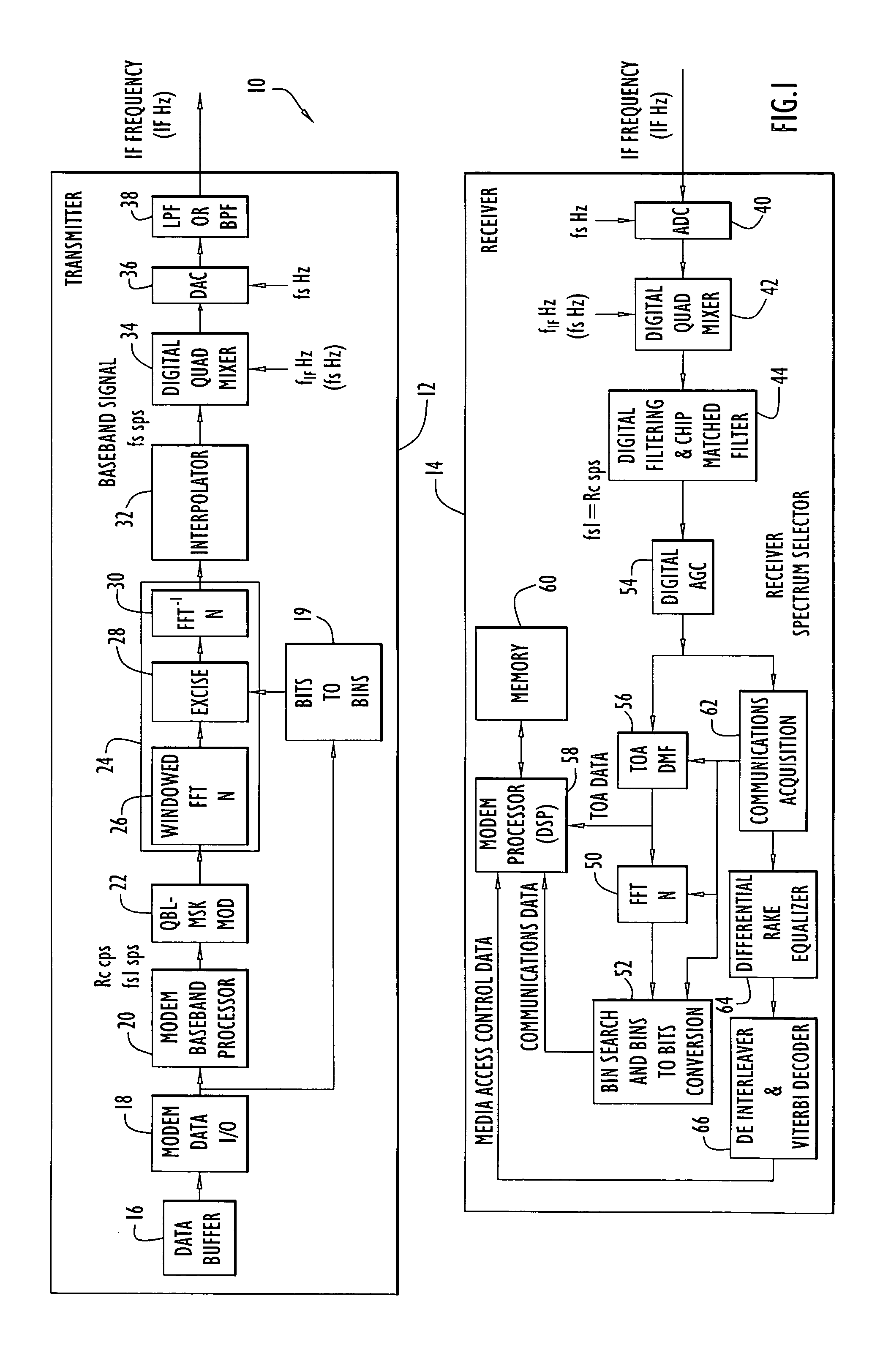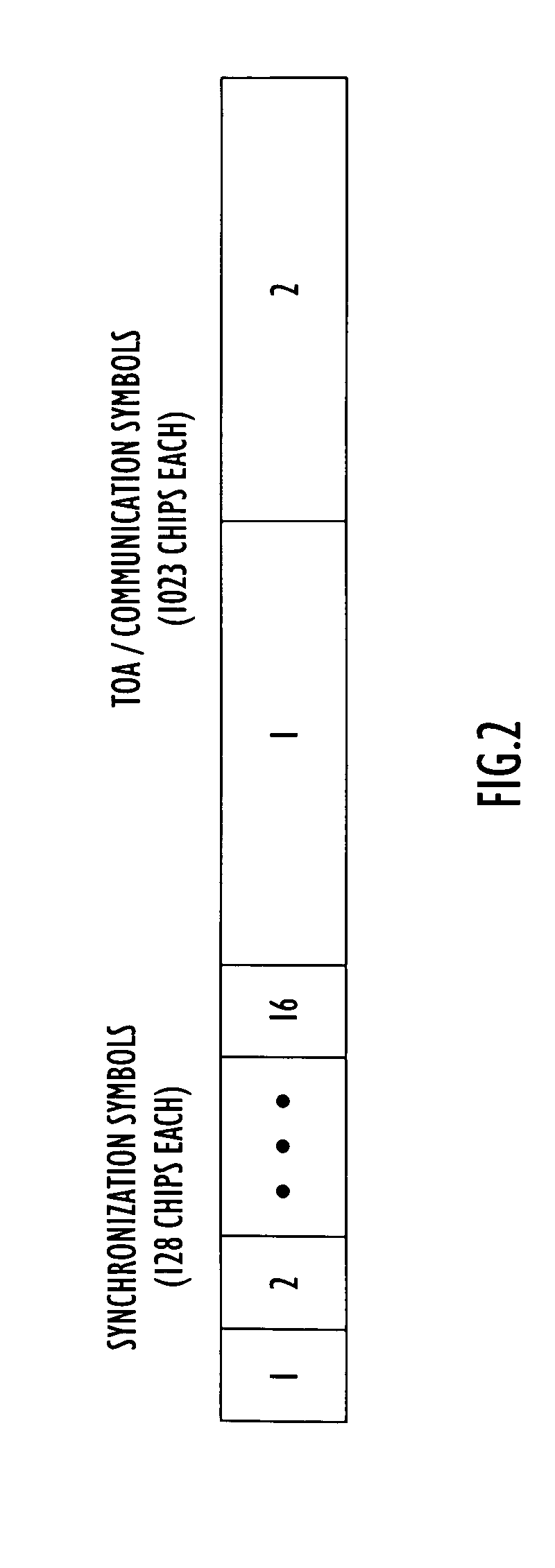Methods and apparatus for encoding information in a signal by spectral notch modulation
a technology of spectral notch and signal, applied in the direction of pulse combined modulation, simultaneous amplitude and angle demodulation, pulse technique, etc., can solve the problems of increasing the complexity of the waveform itself, reducing the communication efficiency of voice data or video information, and reducing the communication efficiency of voice data and video information
- Summary
- Abstract
- Description
- Claims
- Application Information
AI Technical Summary
Benefits of technology
Problems solved by technology
Method used
Image
Examples
Embodiment Construction
[0019]The following detailed explanations of FIG. 1-4 and of the preferred embodiments reveal the methods and apparatus of the present invention. In accordance with an important aspect of the invention, information is encoded in a signal by notching out portions of the spectrum of the signal in a selective manner. The bandwidth of the signal can be divided into segments, for example, by performing a fast Fourier transform (FFT) on the signal to produce some number of frequency bins. A code of missing frequency bins can be generated by notching out or “nulling” a selected subset of the frequency bins (i.e., the signal is modified so that essentially no signal energy is transmitted in these frequency bins). The code of missing frequency bins can be related to a bit sequence, such that bits of information can be encoded in the signal by selectively notching sets of frequency bins in the signal to form symbols. If the total number of frequency bins is N and combinations of M frequency b...
PUM
 Login to View More
Login to View More Abstract
Description
Claims
Application Information
 Login to View More
Login to View More - R&D
- Intellectual Property
- Life Sciences
- Materials
- Tech Scout
- Unparalleled Data Quality
- Higher Quality Content
- 60% Fewer Hallucinations
Browse by: Latest US Patents, China's latest patents, Technical Efficacy Thesaurus, Application Domain, Technology Topic, Popular Technical Reports.
© 2025 PatSnap. All rights reserved.Legal|Privacy policy|Modern Slavery Act Transparency Statement|Sitemap|About US| Contact US: help@patsnap.com



